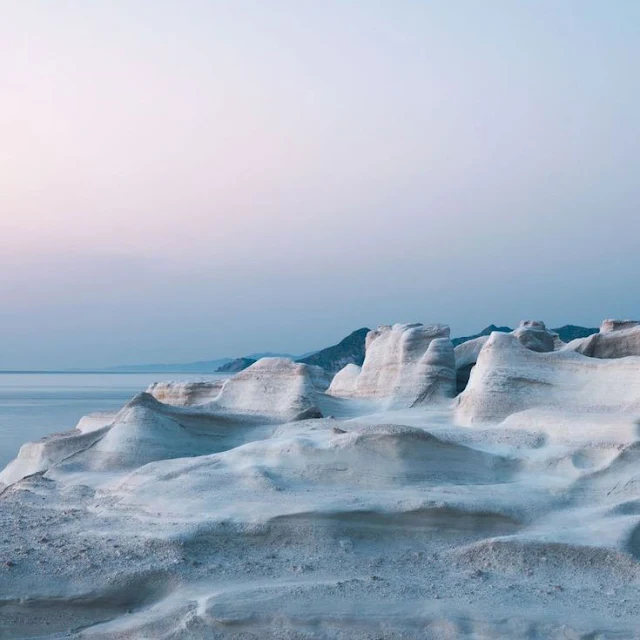Greece's beautiful Cyclades archipelago is renowned for its picturesque islands, and among these, Milos island stands as a gem waiting to be explored.
Famous for its unique landscapes, pristine beaches, and captivating history, Milos offers a diverse range of sights and attractions that cater to the interests of all travelers.
Here, we'll take you on a journey through some of the island's most compelling places to visit.
1. Sarakiniko Beach
Sarakiniko Beach, often described as the "moon-like landscape," is Milos' most iconic attraction. With its otherworldly white volcanic rock formations carved by wind and sea, it's the perfect place for an otherworldly photo opportunity. Swim in the crystal-clear waters and explore the labyrinth of hollowed rocks.
2. Kleftiko Beach
Kleftiko Beach, accessible only by boat, is a striking set of sea caves and rock formations that offer an adventurous escape. Its name derives from the pirates who once found refuge here. Snorkeling in the turquoise waters and exploring the sea caves is an absolute must.
3. Ancient Theater of Milos
Delve into the island's rich history at the Ancient Theater of Milos. Carved into the volcanic rock, this well-preserved theater dates back to the Hellenistic period and offers stunning sea views. It's a testament to the island's ancient heritage and makes for a fascinating visit.
4. Catacombs of Milos
For those interested in historical and cultural heritage, the Catacombs of Milos are a compelling attraction. These early Christian catacombs, dating back to the 1st century, are among the oldest and most extensive in the world. They provide a glimpse into the island's religious history.
5. Plaka
The charming capital of Milos, Plaka, is a hilltop village with narrow streets, white-washed houses, and breathtaking panoramic views of the Aegean Sea. Explore its quaint alleys, visit the Folk and Archaeological Museums, and enjoy local cuisine at traditional tavernas.
6. Mandrakia
Mandrakia is another idyllic fishing village with colorful "syrmata" (boat houses) lined along the coast. It's a tranquil place to savor the local atmosphere and enjoy fresh seafood at the waterfront tavernas.
7. Pollonia
The fishing village of Pollonia is known for its relaxed ambiance and sandy beaches. It's an ideal place to unwind, with charming cafes and restaurants serving delicious Greek dishes.
8. Klima
Klima, a charming fishing village on the Greek island of Milos, is a picturesque gem known for its iconic boat houses, serene atmosphere, and the simple, unhurried way of life. If you're seeking an authentic and tranquil experience in the Cyclades, Klima is the place to be.
9. Milos Mining Museum
For a more in-depth understanding of the island's geological history, the Milos Mining Museum is an excellent stop. Learn about the island's mining heritage and its role in providing raw materials to the ancient world.
10. Firiplaka Beach and Tsigrado Beach
Firiplaka and Tsigrado are two more fantastic beaches with unique rock formations. Enjoy the turquoise waters, explore sea caves, and unwind on the soft sands.
Milos, with its fascinating landscapes and rich cultural heritage, offers an array of experiences for all types of travelers. Whether you're an adventure seeker, a history enthusiast, or simply seeking relaxation in a stunning natural setting, this Cycladic paradise has something to offer. Exploring the sights and attractions of Milos is a journey that promises unforgettable memories and a deeper connection to the captivating Greek island life.

Comments
Post a Comment